Imagine a Different Kind of Future — What Would It Feel Like to Live in a Symbiotic Culture?
FAQ #4: IMAGINE …What if this were put into practice, and what would it look like?
FAQ Series #4: IMAGINE …What if this were put into practice, and what would it look like?
We all feel that deep tension between how we know we are meant to live and how the world trains us to survive.
I wrote Birthing the Symbiotic Age to help name that tension, trace its roots, and offer a practical path forward. We are living through the unraveling of an old story—one defined by separation, domination, and disconnection from the sacred. But beneath the noise, a new way of life quietly takes root.
I call it Symbiotic Culture—a way of living that realigns our personal lives, communities, and systems with the relational wisdom woven into creation. This post is the fourth in a series of FAQs introducing the vision behind the book: a sacred Culture of Connection rooted in Love, spiritual coherence, and community. Whether you’re new to these ideas or have walked this path for years, I invite you to explore what this cultural transformation might mean for you and all of us.
Previous Frequently Asked Questions:
FAQ #1: The Symbiotic Age Has Begun—What If Love Was the Blueprint for Society?
FAQ #2: The Symbiotic Age Is Taking Root—Who’s Already Living It Without Knowing?
FAQ #3: From Separation to Symbiosis — How Do We Actually Begin to Build This?
FAQ #4: Imagine a Different Kind of Future — What Would It Feel Like to Live in a Symbiotic Culture?
FAQ POST #4 — IMAGINE
I. VISION OF A SYMBIOTIC SOCIETY
1. WHAT WOULD SOCIETY LOOK LIKE IF WE ADOPTED THIS ANCIENT BLUEPRINT?
It would look like a Culture of Connection—where communities are rooted in sacred trust, decisions flow from shared virtue, and the well-being of each is held as the responsibility of all. Practicing intentional mutual benefit—from self to family to community to nation—becomes the living norm. Schools would cultivate whole persons, not just workers. Workplaces would serve all of life, not just markets. Neighborhoods would feel like extended family, and politics would become the practice of collective care. This isn’t utopia—it’s the logic of love in action. The Ancient Blueprint isn’t fantasy; it’s the original design of reality. We’ve strayed from it—but we can remember. And rebuild. Together.
2. ARE YOU SAYING WE CAN BUILD HEAVEN ON EARTH? ISN’T THAT UTOPIAN?
Not a utopia in the modern sense. I believe Jesus’ phrase “thy Kingdom come, thy will be done, on Earth as it is in Heaven” meant something real, relational, and present—not just future or spiritual. I’m not describing a perfect society but a symbiotic one—a culture rooted in Love, sacred design, and mutual flourishing. This isn’t about control or fantasy—it’s about alignment with divine reality, here and now. A symbiotic society isn’t a dream of an idealized world, but the rediscovery of the original, divine order that supports life, connection, and abundance. It’s the practice of love made visible in everyday interactions, relationships, and systems. When we align with this divine order, we create a more just, compassionate, and coherent world, one step at a time and right where we are.
3. WHAT WOULD IT FEEL LIKE TO WAKE UP EACH DAY IN A CULTURE BUILT ON TRUST AND MUTUAL CARE?
It would feel like breathing in peace before your feet even hit the floor. You’d know your neighbors not as strangers but as companions in a shared story. You’d sense safety—not from walls and locks, but from the woven bonds of care that hold the community together. Your work would matter, not just for income for you and your family, but for its contribution to the common good. Joy would no longer be something you “find” in rare moments, but the natural byproduct of a life lived in reciprocity. Decisions would be guided by shared virtues, and there’d be a deep knowing that your gifts are seen, needed, and valued.
4. HOW DOES THE ANCIENT BLUEPRINT SPEAK TO THE CHALLENGES OF MODERN LIFE?
The Ancient Blueprint isn’t a relic of the past—it’s the operating system of creation itself. In an age of burnout, loneliness, and division, it offers a way to restore balance between soul, society, and the natural world. Its principles—love, mutual benefit, stewardship, and sacred order—counter the frantic pace and fragmented loyalties of modern life. It calls us back to wholeness, not by rejecting technology or progress, but by re-rooting them in what sustains life. By recovering these patterns, we can address the root causes of our crises instead of endlessly treating symptoms.
II. PERSONAL & LOCAL TRANSFORMATION
5. HOW WOULD MY LIFE BE DIFFERENT – MY FAMILY, NEIGHBORHOOD, COMMUNITY?
If we lived by the Ancient Blueprint, life would feel more whole and abundant. Families would become places of shared purpose and healing, not just survival. Neighborhoods would shift from isolation to mutual care—where we know one another, share resources, and show up in crisis and celebration alike. There would be less anxiety, worry, and depression, replaced by a deeper sense of balance between the needs of the soul and the fulfillment of the needs of those around us. Communities would no longer be driven exclusively by competition, but by the joy of contribution and sacred belonging. You’d feel less alone, more grounded, and connected to something larger than yourself. Love would no longer be a private sentiment—it would shape the systems around you. Your life would become part of a living tapestry, woven with purpose, peace, and collective care.
6. WHERE DOES SPIRITUAL METANOIA MEET CIVIC ENGAGEMENT?
True transformation begins within—but it must ripple outward into the world. Metanoia becomes civic power when it’s embodied in mediating structures: those “little platoons” that Edmund Burke spoke of—faith communities, neighborhood groups, symbiotic networks, cooperatives, schools, mutual aid circles, and sacred gatherings. These are the “third places” between individuals and institutions (market and state) where belonging, virtue, and shared responsibility take root. Across the globe, “islands of coherence” are reclaiming sacred civic life—not through ideology, but through love in action. It’s here that the inner and outer meet, giving rise to a culture of connection, mutual care, and moral renewal.
7. WHAT SMALL CHANGES IN DAILY LIFE CAN BEGIN TO SHIFT A NEIGHBORHOOD TOWARD CONNECTION?
Start by being visible and available—share a greeting, learn names, and show curiosity about others’ stories. Create small acts of reciprocity: swap garden produce, host a block gathering, or organize a shared tool library. Show up consistently in times of need and celebration alike. Choose to spend money locally, supporting those who live and work alongside you. Even small rituals—like a weekly shared meal—can begin to stitch the social fabric back together. The shift begins not with grand programs but with steady, human-scale acts of care.
8. HOW CAN PERSONAL SPIRITUAL PRACTICE HELP HEAL DIVISIONS IN LOCAL COMMUNITIES?
Spiritual practice grounds us in something deeper than our opinions or politics—it roots us in love, humility, and the dignity of every person. When we carry that grounding into community life, we can listen without defensiveness, forgive without erasing truth, and extend trust across divides. Inner stillness helps us resist the reactive cycles of outrage that fracture neighborhoods. By embodying patience, kindness, and moral courage, we create the relational safety needed for honest dialogue and shared action.
III. PATHWAYS FROM SEPARATION TO CONNECTION
9. HOW DO WE GET FROM HERE TO THERE – FROM THE CULTURE OF SEPARATION TO THE CULTURE OF CONNECTION?
We follow a five-stage path of transformation that begins within. First, individuals cultivate Personal Practice rooted in Divine Love and Virtue. Then multiple Symbiotic Circles form, creating Cultural Infrastructure grounded in trust. These circles connect and evolve into Social Infrastructure—networks that meet twelve shared needs like food, economy, faith, and neighborhoods. This gives rise to a Network Commons, a just and relational economy. Finally, Political Infrastructure emerges from shared coherence—not control. This transformation is already happening simultaneously across the globe, not from governments or institutions, but from the grassroots, where ordinary people are building a sacred society from the ground up.
10. WHAT IS MEANT BY “LIVING A LIE” AND HOW WILL LIVING THE TRUTH MAKE A DIFFERENCE?
“Living a lie,” as Václav Havel (a co-founder of Charter 77) described, is the quiet compromise we make when we conform outwardly to systems we know inwardly are false—whether through fear, habit, or the lure of comfort. Václav Benda saw that this compromise corrodes not just politics, but the human spirit, breeding apathy and moral resignation. “Living in truth” is the antidote: aligning our public actions with our private conscience, refusing to separate our moral convictions from our civic life.
When enough people choose truth over complicity, they begin to form communities of trust—what Benda called the Parallel Polis. These parallel structures aren’t escapist enclaves; they are living prototypes of a freer, more humane society, operating within the cracks of the old order. In them, truth is practiced as a shared way of life, and the future is quietly born in the present.
11. WHAT ROLE DOES BRIDGE-BUILDING ACROSS DIFFERENCES PLAY IN CREATING A SYMBIOTIC CULTURE?
Bridge-building turns potential conflict into creative energy. In a Symbiotic Culture, differences aren’t erased—they’re harnessed as sources of learning and innovation. By creating spaces for honest dialogue and shared work, we replace suspicion with trust. Symbiotic Kinship breaks down stereotypes, enabling cross-worldview partnerships that reveal our shared humanity behind positions. This doesn’t mean avoiding hard truths but approaching them with a commitment to dignity and shared purpose. The result is a culture that’s stronger because it integrates diverse perspectives into a coherent whole.
12. HOW DO WE MOVE FROM ISOLATED “ISLANDS OF GOOD” TO A COHERENT CULTURAL MOVEMENT?
We start by connecting existing local efforts—faith groups, local businesses, organizations, local government, mutual aid networks, regenerative projects—into a larger relational web. The Symbiotic Culture DNA protocol, built on shared language, guiding principles, and mutual trust, forms the backbone of this network. As these “islands” align around common virtues and reciprocal support, they gain the resilience and influence to shape culture locally—and globally. When this alignment happens not in a few places, but in thousands communities at the same time, regional, national, and then global Parallel Polis emerges: a decentralized, symbiotic society growing from the bottom up. This shift requires both humility (to learn from others) and boldness (to invite collaboration without controlling it).
IV. SYSTEMS OF SYMBIOTIC CULTURE
13. WHERE ARE THE THREADS OF SYMBIOTIC CULTURE ALREADY EMERGING IN THE WORLD TODAY?
Though largely unacknowledged by the Culture of Separation, they are already woven into grassroots movements, faith-rooted communities and their service, regenerative economies, main street businesses, and organizations, mutual aid networks, and spiritual communities reclaiming sacred purpose. You’ll find them in neighborhood resilience projects, food system networks, bridge-building civic efforts, bioregional alliances, and purpose-driven small businesses. They’ve been made manifest in the early Christian communities, Sarvodaya villages in India and Sri Lanka, in the Czech Parallel Polis, and through countless “ordinary mystics” living love in action. These are the movement threads—distinct but aligned. What has been missing until now is coherence. Symbiotic Culture doesn’t start from scratch—it connects what’s already alive, helping these threads weave into something stronger, relational, and transformative.
14. HOW DOES SYMBIOTIC CULTURE CHALLENGE TRADITIONAL POWER STRUCTURES AND HIERARCHIES?
Symbiotic Culture rejects top-down, coercive systems and replaces them with decentralized, relational governance—where authority is earned through virtue, service, and trust. The vision is a decentralized political and economic commonwealth, with subsidiarity as the guiding principle: decisions made at the most local level possible.
It begins with forming symbiotic circles that root the Symbiotic Culture DNA within existing networks, strengthening trust and mutual care. These circles link across silos, weaving what already works into a wider symbiotic society. Regional networks then organize around the twelve common community needs—food, economy, energy, water, relationships and spirituality, arts and culture, and more—creating practical interdependence.
A region-wide Network Commons follows, where resources and knowledge flow freely. From this foundation emerges a parallel system of governance—rooted in truth, trust, and love. When this pattern takes hold in 50,000 communities at once, a living Parallel Polis becomes not only possible, but unstoppable.
15. HOW DOES SYMBIOTIC CULTURE ADDRESS ECOLOGICAL SYSTEMS?
Symbiotic Culture offers an integrated approach to environmental challenges by aligning human systems with the natural world and spiritual reality. Rather than exploiting resources, the focus is on regeneration, sustainability, and stewardship. By fostering local, bioregional economies that prioritize community self-reliance and ecological balance, communities can work toward restorative practices like circular economies and regenerative agriculture. This cultural shift would replace extraction-based models with systems that nurture the Earth, emphasizing care for the planet as a sacred duty – starting right where we live.
This vision is not rooted in any one modern framework—such as “ecological civilization” or a particular “new economy” model—but in the Ancient Blueprint, the underlying spiritual reality that inspires “care for creation.” By starting from this deeper, sacred order, Symbiotic Culture grounds environmental stewardship in love, virtue, and the interconnectedness of all life, ensuring future generations can thrive.
16. HOW CAN BUSINESSES ALIGN WITH THE VALUES OF SYMBIOTIC CULTURE AND A VIRTUOUS ECONOMY?
Businesses can align with the values of Symbiotic Culture by adopting practices that harmonize people, planet, and profits. This requires expanding beyond a purely competitive, growth-driven mindset toward one of collaboration, sustainability, and shared responsibility. Companies participate in symbiotic networks within their areas of the twelve shared needs, while also connecting to the larger Network Commons that links communities and sectors.
They integrate ethics into their business models by focusing on the well-being of employees, customers, and the broader community. Pope Benedict XVI’s principle of gratuitousness—acting not only for exchange or profit but as a gift—captures the heart of this approach. Rooted in the Ancient Blueprint, it frames business as a vocation to serve the common good, where relationships, trust, and moral character are as essential as revenue. By embedding values of compassion, mutual respect, and stewardship into every aspect of their operations, businesses can help build a culture of connection, mutual benefit, and collective flourishing. In this light, economics itself becomes an act of love made systemic—where every exchange strengthens the bonds of community and reflects the sacred order that sustains life.
17. HOW WOULD THE ECONOMY WORK IN A SYMBIOTIC CULTURE?
The decentralized, market-based economy of Symbiotic Culture would balance the personal and financial needs of businesses with mutual benefit, collaboration, and shared purpose. Local production of basic resources like food, energy, and water would increase, with these resources distributed through decentralized networks to meet community needs. A new Network Commons would unite individuals, businesses, nonprofits, and civic entities, ensuring shared governance and collaboration for the benefit of all.
This would be a community-based collaboration where various stakeholders—nonprofits, private businesses, faith communities, and public resources—are intentionally interconnected and governed by a transparent multi stake-holder network. Markets would be founded and grounded on Symbiotic Culture DNA—shared purpose, Virtues, and cooperative infrastructure. The focus would be on meeting everyone’s needs and ensuring collective well-being, creating a virtuous economy grounded in moral character. We envision the organic development of a global commonwealth of regional economies—global yet locally based—a bottom-up trading system to replace the current globalization of larger corporations and national states.
V. SCALING AND INTEGRATION
18. WHAT WOULD BE THE ROLE OF TECHNOLOGY IN A SYMBIOTIC CULTURE?
In a Symbiotic Culture, technology would serve as a tool to enhance human connection and mutual benefit, rather than a means of control or exploitation. It would facilitate cooperation, resource-sharing, and community-building by supporting decentralized networks and fostering transparency. Technologies like blockchain, AI, and the Internet of Things (IoT) could help create efficient, localized systems for energy, food, and resource management, aligning with the values of trust and reciprocity.
Social AI, in particular, would help local communities rapidly connect with others around shared passions and roles, allowing people to find their place in the larger web of connection. However, technology would never replace human relationships; it would be a servant of community needs, ensuring that connection, collaboration, and care remain central to every innovation.
19. HOW DOES SYMBIOTIC CULTURE ENHANCE GLOBAL COLLABORATION AND COOPERATION?
Global collaboration would grow from thousands of thriving local communities, each forming a Network Commons where the focus is on meeting local needs as much as possible. Communities would first draw from their regional commons, then—like concentric circles—build trade alliances with neighboring regions, and outward, linking each of 50,000 regions worldwide.
This pattern would replace the current top-down globalization of nation-states and allied corporations with a bottom-up commonwealth of regional economies. Each region would retain its autonomy while contributing its unique gifts to the whole, fostering trust, reciprocity, and resilience. Together, these interconnected commons would create a living global web—an economy rooted not in extraction and competition, but in shared flourishing, mutual care, and the logic of love in action.
Please check out these relevant posts:
The first is about the origins of the Parallel Polis (society). The second and third posts are the Preface and the Introduction from my upcoming book, Birthing the Symbiotic Age, and the fourth and fifth are mini-essays.
About the Parallel Polis
Living in Truth: Building a Parallel Polis Within a Spiritually Hostile Regime
Symbiotic Age Book Preface and Introduction
PREFACE — Living Between Worlds
INTRODUCTION — The Turning Point We’ve Been Waiting For
Mini Essays:
#1: The Original Protocol Was Love: Building a Networked Civilization from the Ground Up
#2: Re-Villaging a Disconnected World: A Sacred Operating System for Our Time
Please feel free to reply to this message.


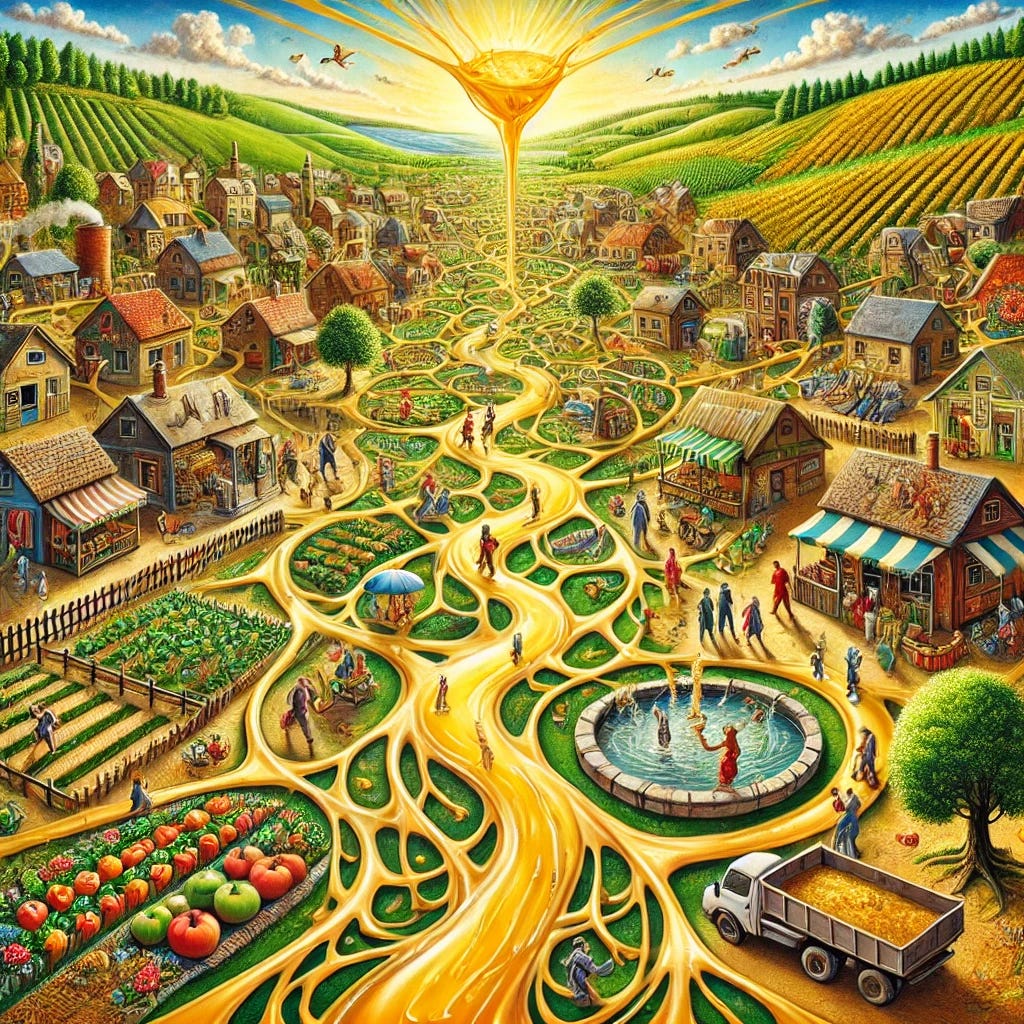
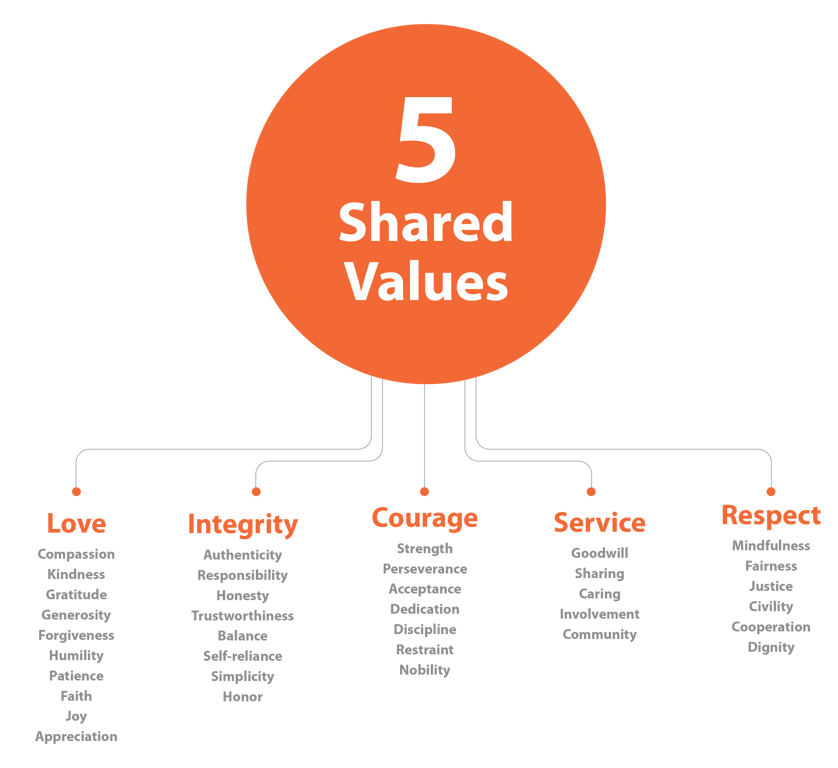
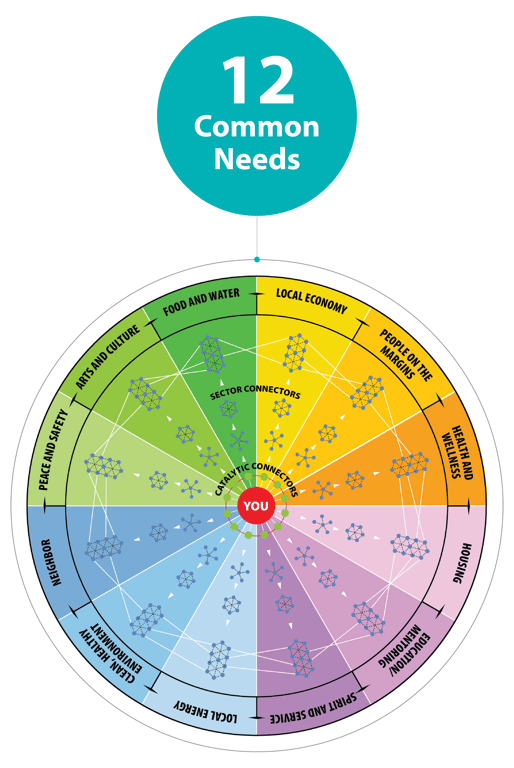
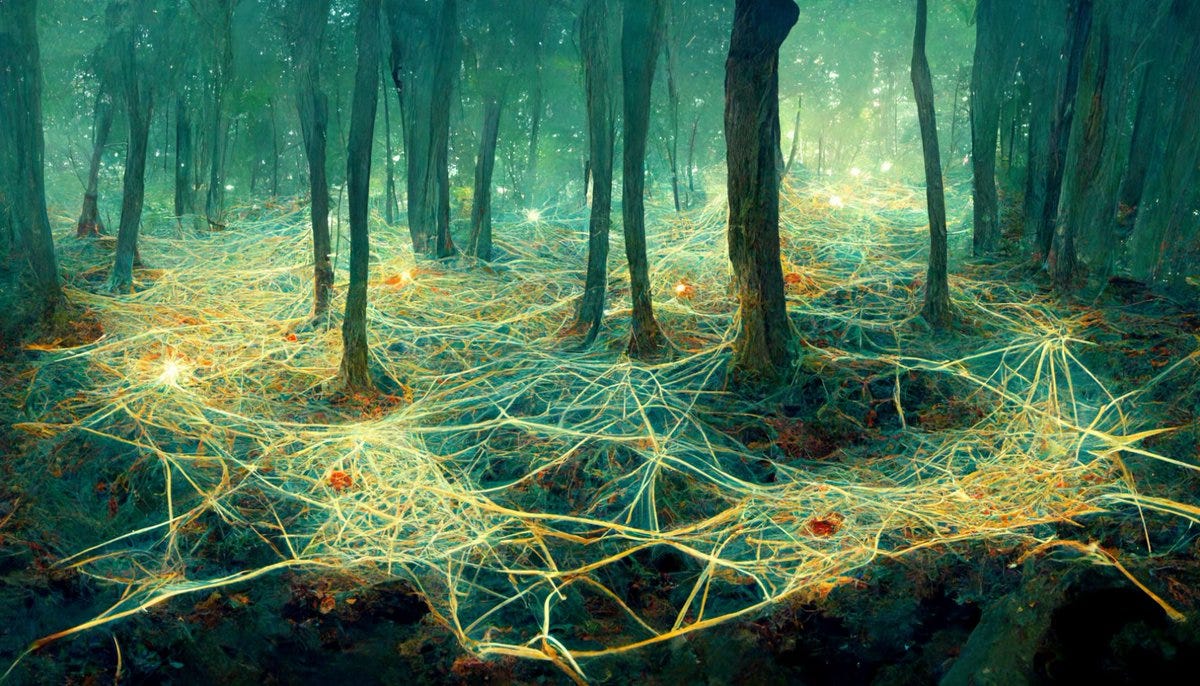
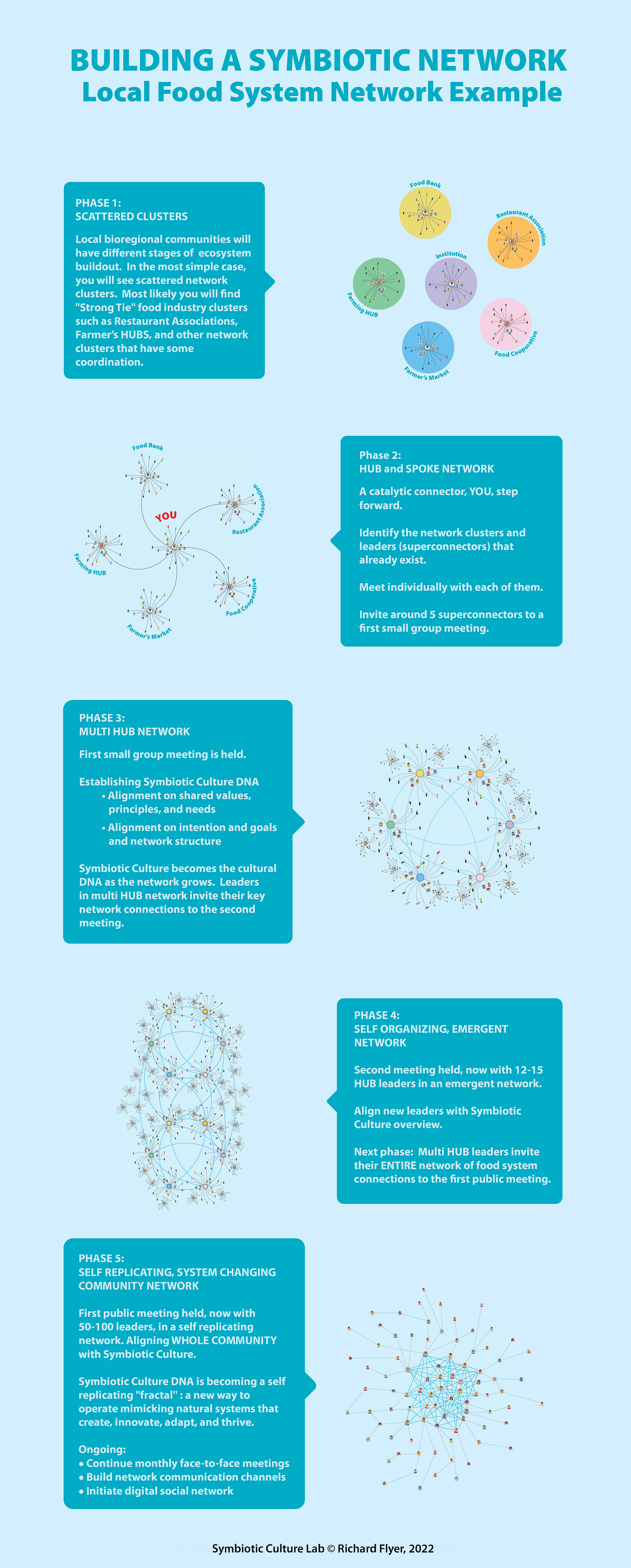

Richard I have been led to your writing this morning via a LinkedIn post and I find what you are writing fascinating. I have not yet had time to delve into more than one or two of your essays so please forgive my question. I was scanning for references to our non-human kin in your work and how working also in their best interests is woven into your different kind of future? Can you point me to where you write about this in your essays and your book. Many thanks.